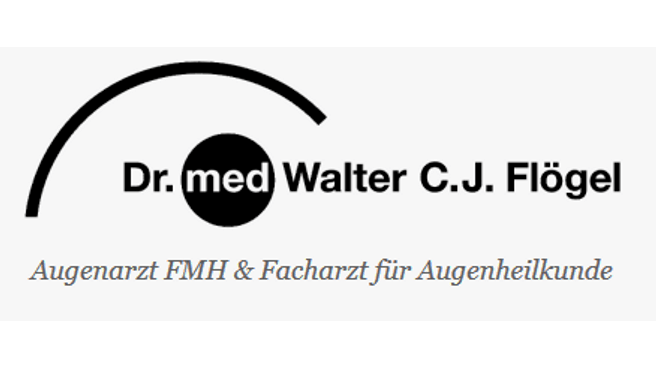Please use Microsoft Edge, Google Chrome or [Firefox](https://getfirefox. com/).
Do you own or work for Flögel Walter C.J.?
About Us
Welcome to our ophthalmology practice in Villabassa
Our practice has existed since 1976 and was taken over by Dr.med. Walter Flögel in 2006.
The eye
The structure of the eye
The most important sensory organ for humans is the eye. Thus, about about 60 % of all human brain functions are directly or indirectly related to vision. The eye has approximately the shape of a sphere with a diameter of about 22 mm. However, only the front parts of the eye can be seen in the face; most of it is hidden and protected in the bony eye socket. The eyelids have another protective function, which can completely cover or close the eye in case of "danger" to the ocular surface.
The outer layer of the eye consists of the sclera, a firm, white, opaque tissue that merges into the transparent cornea at the front.
Inside, the second layer is the choroid, which is interspersed with many blood vessels. Its anterior part merges into the iris, which forms the pupil with its hole in the middle. The size of the pupil depends on the intensity of light entering the eye. In strong light, the pupil is very narrow; in less light or darkness, the pupil is dilated. Stressful situations also cause the pupil to dilate, and certain medications also affect the diameter of the pupil.
Behind the pupil is the lens of the eye, which is surrounded by a capsule. The lens is suspended by very fine suspensory ligaments from the so-called ray body muscle, which influences the shape of the lens and thus its refractive power.
Inside, the eye is lined by the third layer, the retina.
In addition to nerve fibers, it contains millions of photoreceptors that convert the light hitting them into electrical nerve impulses. In addition to the approximately 6 million cone receptors, which are important for daytime vision and color vision, there are approximately 120 million rod receptors, through which black and white vision occurs at night.
In the center of the retina lies the yellow spot, also called the macula. This is where the resolution and thus visual acuity of daytime vision is highest. It is therefore also called the site of sharpest vision.
Behind the lens and in front of the retina lies the so-called vitreous body, which consists of a transparent gel. With increasing age, inhomogeneous condensations can develop in this gel, which are then sometimes perceived as wandering fluff or opacities. They are also called "mouches volantes" and are usually completely harmless.
Function of the eye:
When there is a disorder or opacity of even one of the above anatomical structures, vision is more or less impaired. When the eye functions normally, light from the environment is focused by the cornea and crystalline lens, passes through the vitreous body and is projected onto the retina. There, in a process called transduction, the light is converted into electrical nerve impulses and initial signal processing and integration occur. The signals finally reach the brain via the optic nerve, where the interpretation of what is "seen" takes place.
This text has been machine translated.
Languages
Location and contact
Flögel Walter C.J.
-
office address
Brunngasse 18 8001 Zürich
-
Phone
0442... Show number 044 265 60 40
- Visit site Visit site
reviews
Do you wish to rate "Flögel Walter C.J."?

There are no reviews for this company yet.
Have you any experience of this company?

* These texts have been automatically translated.
Other listers

Flögel Walter C.J.







